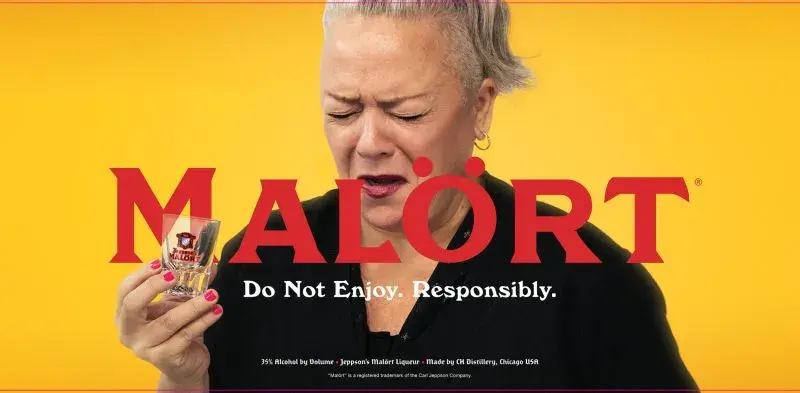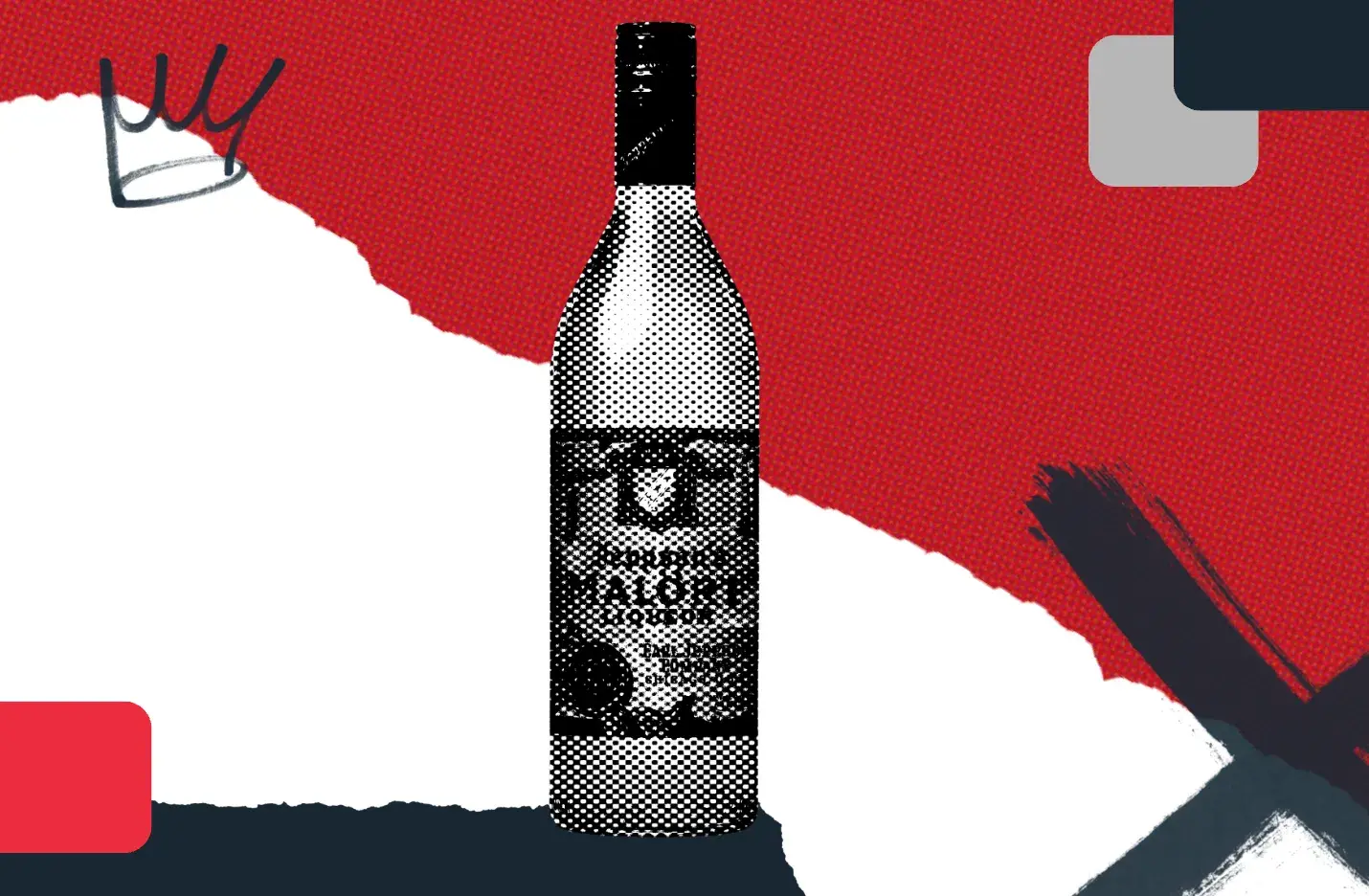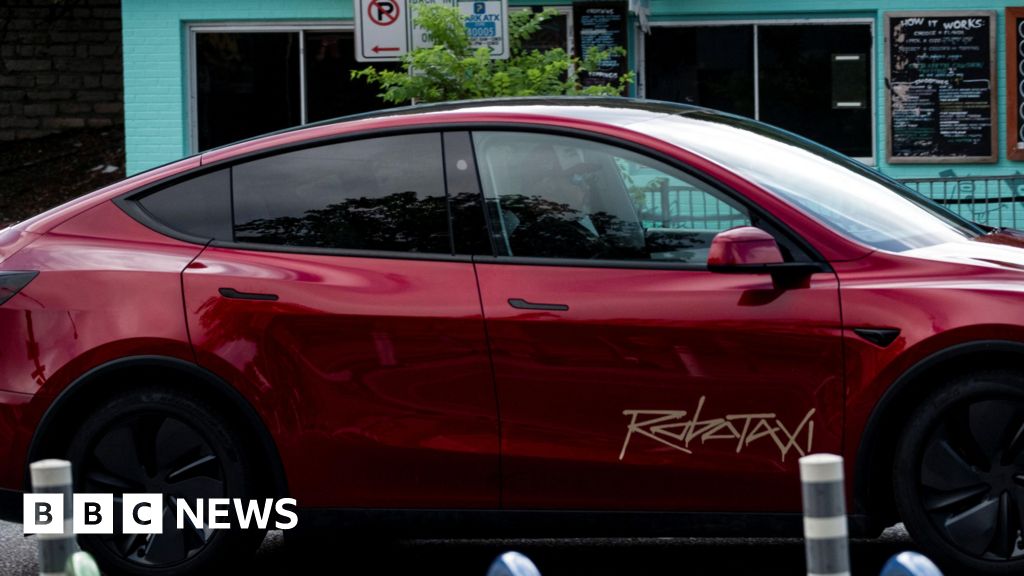This week’s Masters in Marketing is near and dear to my heart, if not my taste buds.
As a naturalized Chicagoan, it is my duty and honor to introduce you to one of the city’s most disgusting — and most beloved — substances.

The herbaceous flavor of Jeppson’s Malört (Swedish for “wormwood,” the drink’s only flavoring) was (in)famously described by comedian John Hodgman as “pencil shavings and heartbreak.”
To find out how CH Distillery markets a liqueur that’s only reliably available to 2.7 million people and tastes like burning rubber, I talked to Anna Sokratov, brand manager at Jeppson’s Malört at CH Distillery in Chicago.
Sokratov has the enviable job of getting people excited to drink what has been called “the worst beverage in the world.” In 2023, Sokratov co-created an ad campaign featuring photos of people tasting Malört for the first time, with the tagline, “Do not drink. Responsibly.”
Lest you think any of this is an exaggeration, please know that Malört was legal during Prohibition because it was convincingly sold as a medicine … for stomach worms.
Lesson 1: Build community around shared experiences.
At first sip, Malört does not seem like an exercise in community-building, unless that community is your enemies.
But Sokratov describes a scene familiar to any Chicagoan who’s seen the inside of a bar: One person takes their first shot of Malört (this is not a sipping alcohol, trust), and everybody around them cheers. Soon, everybody wants to try it. Most regret it.
“Whenever you talk about Malört, people always share a crazy story or [give you] the most obscene way to describe the flavor,” she says. “And in a weird way, it creates community.”
Sokratov also points out that most Chicagoans aren’t enjoying a shot of Malört by themselves after a long day at the office. It’s more of a rite of passage, a “way to connect with people through stories of what you think it tastes like.”
“We thrive off of people talking about us and sharing the good and the bad of Malört,” Sokratov says.
Take the recent campaign “I Malörted,” which compares a shot of Malört to voting for a candidate you dislike (not mentioned: that you have to hold your nose for both).
It’s not just a funny ad, it’s supporting local businesses — Malört drinkers can get an “I Voted”-style sticker from more than a hundred bars and liquor stores around Chicago.
Lesson 2: Break the fourth wall.
The first Malört ad I ever saw was in 2022, in season one of the Chicago-set TV show The Bear, of all places. Sokratov says it was one of the first ads they ever ran — for nearly a century prior, Malört relied on word of mouth and Chicagoans pranking out-of-town guests.
Since marketing Malört is such a new phenomenon, Sokratov feels a lot of freedom to be funny, to be outlandish, to be experimental. (In fact, one of the people she looks to for inspiration is previous marketing master Greg Fass of Liquid Death.)
It’s an old saw at this point that authenticity drives consumer loyalty. But less is said about what authenticity looks like. “People are really looking for brands that break that fourth wall,” Sokratov says. “They want to see the people behind the brand.”
Past and present employees appear in a series of ads featuring Malört faces (Google it), which are underscored by the tagline, “Do not enjoy. Responsibly.” Malört may be a lot of things, but it’s neither dishonest nor indirect.

Lesson 3: One size does not fit all.
Sokratov raises an eyebrow at the adage that marketing is about storytelling. Tell stories — plural.
She says that it’s a mistake to think that Malört’s taste means that there’s not a lot of nuance in marketing it. “One size does not fit all when it comes to something like this.”
“It‘s easy to try and fit this brand into one single category of ‘everybody thinks it just tastes bad,’” Sokratov tells me. “But it’s a lot more complex than that.” Though Malört employees have joked about just putting a photo of a toilet on an ad, they’d rather explore the multiplicity of taste experiences.
Part of the fun of trying Malört for the first time is trying to describe the taste. Sokratov has heard “gasoline” and “used Band-Aid,” which do sound like quite disparate flavors, though I’m not willing to confirm.
Redditors have described the taste as “turpentine,” “old tire and bug spray,” and “all your hopes and dreams being snuffed out at once.” In 2018, Chicago Magazine quoted such poetry as “the liquid equivalent of a Chicago winter” and “a punch in the face.”
For the record, I like Malört, but I think it tastes like grapefruit and rubbing alcohol with a violent aftertaste of burnt tire.

If the taste is experienced so differently, “then the story we tell should be different to a lot of other people,” Sokratov says. Throughout its history, Malört has not been shy about using different descriptions of its product, which include such gems as “Malört: Kick your mouth in the balls.”
Not every ad campaign will be a viral success, but “we still learn about the people who drink it.”
Lingering Questions
This edition of Masters in Marketing introduces a feature we’re calling Lingering Questions. The rules of play are simple: Each person we interview gives us a question we’ll ask of the next master of marketing. They don’t know who it will be (and sometimes neither do we).
Since Anna Sokratov of Malört is the first in this series, a fellow Chicagoan and I came up with a question to kick things off:
Malört is one of Chicago’s mascots. What would Malört’s mascot be, and why?
Sokratov: A 31-gallon galvanized steel trash can with a lid. Both are perceived as being unappealing or gross, and the cans last a long time — similar to the long-lasting flavor of Malört.
Sokratov gave us a question that our next master of marketing will answer in next week’s newsletter, and I promise that you will not want to miss their answer: What unconventional marketing approach would you like to take, and how would you go about doing something you haven’t done before?
Subscribe below to see next week’s answer and the next lingering question.

Credit: Source link











